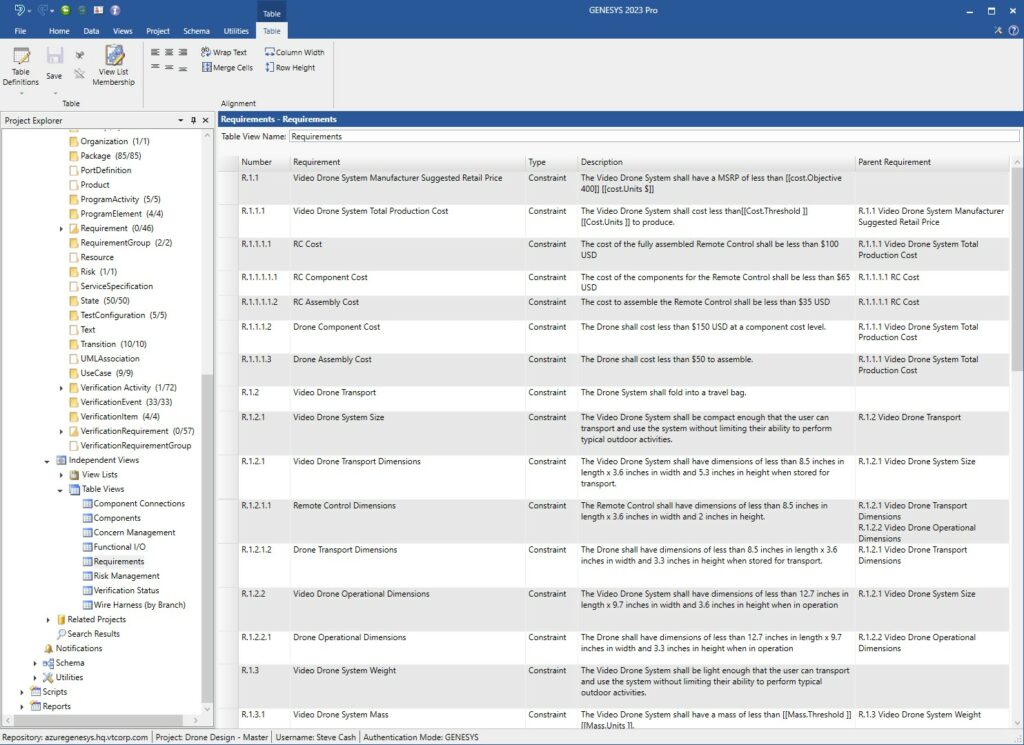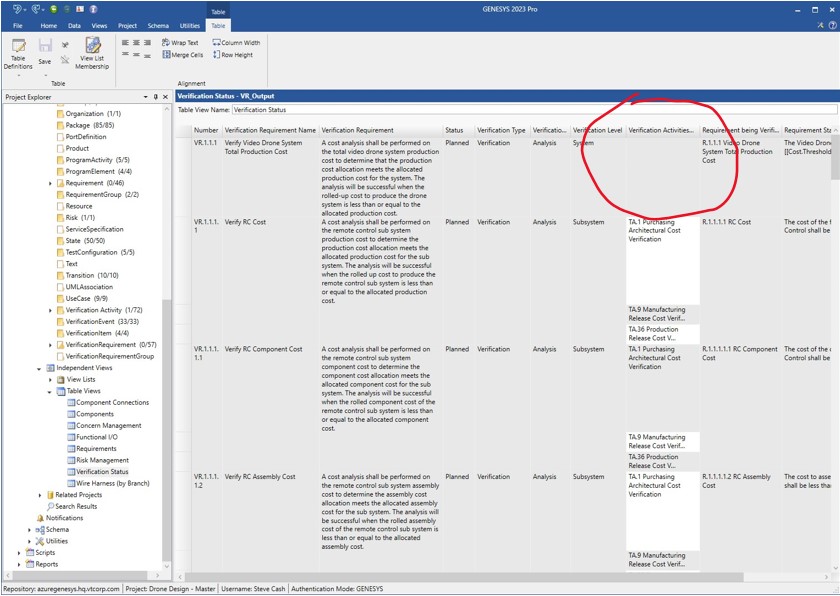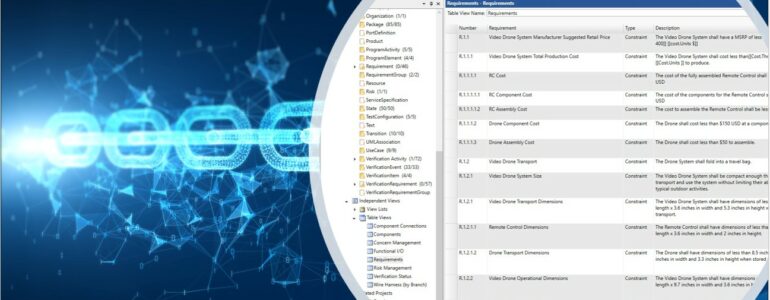Part I: Requirements Management Activities
This is Part I in a series of three posts about Table Views in GENESYS. In Part II, our guide takes us through system architecture activities by reviewing components traceability tables, functional I/O tables, and a wire harness table, illustrating the great power and insight that a model-based systems engineering tool can bring to your practice.
Introduction
In our latest GENESYS 2023 release—R2, we introduced a powerful feature that provides a streamlined approach to managing and visualizing data—Table Views. This capability allows users to create, customize, and explore data in an organized and efficient manner, making it easier to analyze and convey the results of that analysis to others.
This blog post is the first in a series of three that will take you through the how-to of Table Views for different use cases. In this first post, I will guide you through an explanation of metachain queries and tables that support the requirements management activities of requirement development traceability, verification traceability to requirements, and verification status management.
In the second post, I will take you through the application of tables in reviewing the development of a systems architecture from the perspectives of traceability from concept to requirements, functional specification, and detailed design architecture.
In the third post, I will guide you in the use of the table to support the programmatic activities of managing concerns and risks.
Metachain Queries
A metachain is a set of data elements within a larger data model, where each element has its own characteristics, and the elements are connected to one another through relationships. The chains can have many layers of data with each being connected through a relationship. A metachain query is a way of examining and traversing large data sets to create a subset of data for a specific scope or purpose. The query is a way of setting up search criteria that uses the element types and characteristics, and how they are linked together, to expose data from the model.
The query focuses on the linkages, or relationships, to dig through the layers. Relationships can be one to one, one to many, many to one, or many to many. By using the relationships, the metachain query continues until everything of interest for a specific scope or purpose is captured in the data set. The visualization of this metachain is what proves so helpful to the engineer, and Table Views is a window into this wonderland.
In GENESYS, the query starts with an initial set of entities, and we identify the attributes of the entities that are of particular interest. We extend the query by identifying the relevant relationships and collecting those additional entities and their attributes, which we can then display in tables for a specific purpose.
Requirements Traceability Table
A requirements traceability table can be used to identify gaps in the history and hierarchy of requirements development. A gap may indicate a lack of understanding of why a requirement exists and invite someone to discount or remove a requirement that is necessary. A gap may also indicate that someone has added a requirement inadvertently that could potentially over-constrain a design. In either case, we want to ensure we have the most complete and correct set of requirements to specify the design. We can identify potential gaps by examining a requirement’s information and its parent requirement. If no parent requirement exists, there may be a gap in the traceability hierarchy.
We can build a metachain that starts with the requirements. The attributes of requirement number, name, type, and description are displayed to convey the completeness of the requirement information. An extension to the metachain can be added to identify the parent requirement using the “refines” relationship and to display the parent requirement information.

Requirements Traceability Table
An examination of the table below shows that parental requirements exist for all requirements except the very top-level requirements. This indicates that there is no visible gap in the hierarchy.
Verification Status Table
A verification status table can be used to manage the verification of our system product. The table displays verification requirements, the verification activities that will execute the verification requirement, and the system requirements that are to be verified by the verification requirement. Incorrect or incomplete information could lead to verification being done incorrectly or not done at all.
The metachain starts with the verification requirements. The attributes of number, name, description, status, verification type and verification level are displayed to create a complete picture of the verification requirement. Extensions to the metachain were added to identify verification activities related by the “executed by” relationship and requirements related by the “verifies” relationship. The attributes of number and name are needed for both the verification activity and the requirement for identification. The requirement statement is added for a comparison between the requirement and the verification requirement for consistency.
An examination of the table reveals that all verification requirements are tied to specific requirements and that the requirements are to be executed by one or more verification activities, except that one verification requirement is missing a verification activity. All verification requirements are still in the planned state, as verification activities have not yet started.

Verification Status Table
Conclusion
I have given you some examples of how the Table Views capability in GENESYS 2023 can provide a way to explore your project data from a requirements management perspective. Creating tables like these with the metachain queries enables you to visualize the information in a way that can improve your capability in managing and developing your system requirements and verification. By embracing the power of Table Views, I believe you’ll improve your GENESYS game and discover that you can elevate your requirements and verification management practice to new heights!





